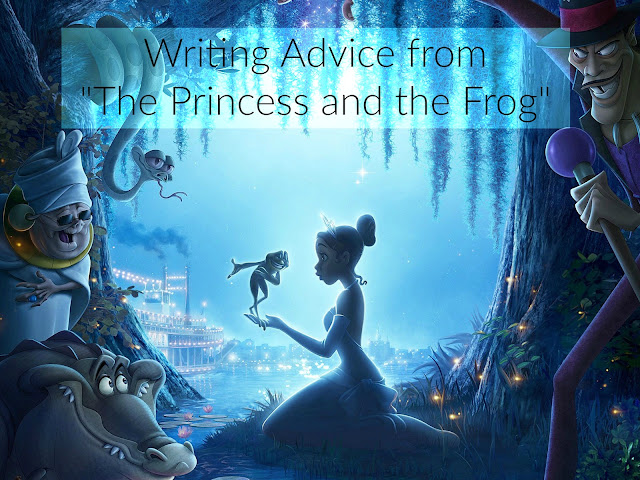Writing Advice from "The Princess and the Frog"
The Princess and the Frog is one of my favorite Disney princess films. I don't appreciate the voodoo (it gives me the creeps), but I've always been able to relate a lot to Tiana. Like her, I've always had to work hard for most things. Our personalities and outlook on life are similar. The movie is also well done and has many valuable lessons for writers in it. Let's take a look.
Complete Opposites Can Be Friends
Tiana and her best friend Charlotte are truly opposites. One is black, one is white. One is poor, the other rich. Simple and fancy. Calm and hyper. Yet, they are true friends in spite of all that. That's always been one of my favorite parts of the movie. Disney could have let Charlotte be a cliche, spoiled rich girl. Instead, she's the sweetest thing, always there for her friend, even if it means sacrificing what she's always wanted.
This is an excellent way to turn a cliche on it's head. Don't let your characters be what people expect. Change things up and let your readers be pleasantly surprised.
Rich People Can Be Good
Charlotte and her father are super rich. But neither of them are mean or nasty to those of a different station or race. Mr. La Bouff can be a bit simple minded, but he's really sweet. And you already heard what I had to say about Charlotte.
This is another thing that can be changed. Money does not equal meanness. A poor person can be just as awful as someone with money. Switch it up, keep things fresh.
A Girl Can be Capable and Still have a Man
All too often, people think that if you have a strong female character she can't also have a man. Tiana is a woman who is strong and capable, and needs a man, even if she doesn't think so at first. Naveen is a bit dorky, but even he learns to be loving and brave. He's fully supportive of her dream, which is so sweet.
So remember it's perfectly okay for your girl characters to be strong and have a male in her life. I think love makes characters even stronger, as it shows she, or he, is not afraid of emotion.
Understand Your Setting
The setting in The Princess and the Frog is quite realistic. The look and feel of New Orleans pops out at you. Everything from the bayou to the riverboats seems to have life to it. It's beautiful. As with many Disney movies, they actually went to New Orleans and spent time there before starting work on the film, which is one reason I think they succeed so well at setting.
Settings are integral to a good story, so make sure you know it well. Research before you start. Find beta readers from that area to help you. Take the time to make your setting come alive, but don't go overboard either.
Foreshadowing is Important
Early in the movie, Tiana wishes on a star after reading the Frog Prince with her friend. In response, a frog hops on her window sill. It's an excellent use of foreshadowing later events in the movie.
If you can foreshadow and give readers a hint of what's coming, it can enhance the story. They'll notice you've been dropping hints the whole time and wonder how they didn't see it before.
What Characters Want Isn't Always What They Need
Mama Odie makes an excellent point during her small screen time. People often think they need one thing, when they actually need something else. What someone wants and what they need can be difficult to tell apart, but are different.
Try starting your story with your character wanting one thing. As the story progresses, they can come to realize they need something else. K. M. Weiland has some great posts on this subject if you want more.
There you have it, six writing lessons from The Princess and the Frog. Do you think I should do more posts like these? Be sure to comment and tell me.
Do you like The Princess and the Frog? What do you think can be learn from it? Let me know in the comments.









Comments
Post a Comment